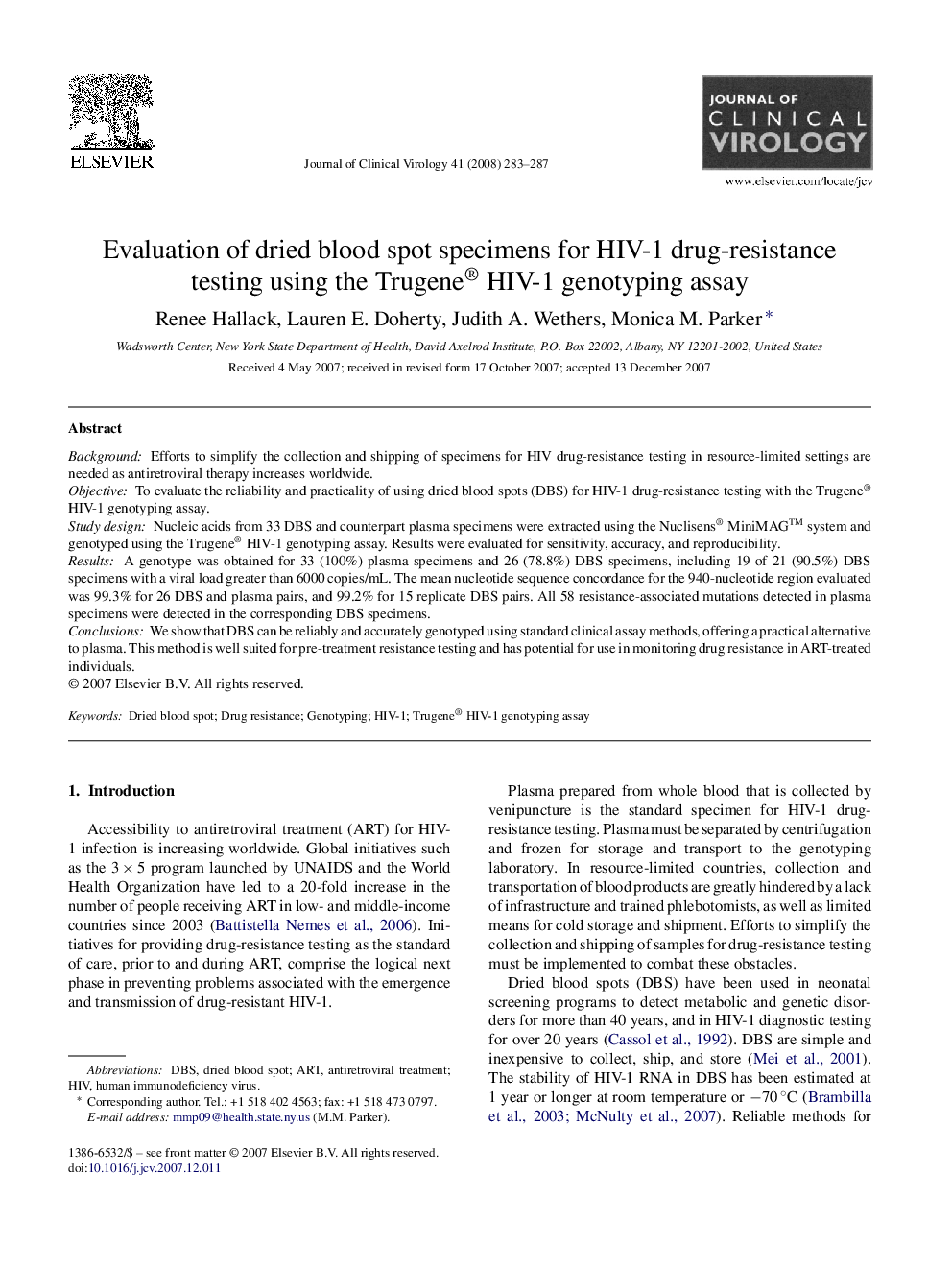| Article ID | Journal | Published Year | Pages | File Type |
|---|---|---|---|---|
| 3370495 | Journal of Clinical Virology | 2008 | 5 Pages |
BackgroundEfforts to simplify the collection and shipping of specimens for HIV drug-resistance testing in resource-limited settings are needed as antiretroviral therapy increases worldwide.ObjectiveTo evaluate the reliability and practicality of using dried blood spots (DBS) for HIV-1 drug-resistance testing with the Trugene® HIV-1 genotyping assay.Study designNucleic acids from 33 DBS and counterpart plasma specimens were extracted using the Nuclisens® MiniMAG™ system and genotyped using the Trugene® HIV-1 genotyping assay. Results were evaluated for sensitivity, accuracy, and reproducibility.ResultsA genotype was obtained for 33 (100%) plasma specimens and 26 (78.8%) DBS specimens, including 19 of 21 (90.5%) DBS specimens with a viral load greater than 6000 copies/mL. The mean nucleotide sequence concordance for the 940-nucleotide region evaluated was 99.3% for 26 DBS and plasma pairs, and 99.2% for 15 replicate DBS pairs. All 58 resistance-associated mutations detected in plasma specimens were detected in the corresponding DBS specimens.ConclusionsWe show that DBS can be reliably and accurately genotyped using standard clinical assay methods, offering a practical alternative to plasma. This method is well suited for pre-treatment resistance testing and has potential for use in monitoring drug resistance in ART-treated individuals.
